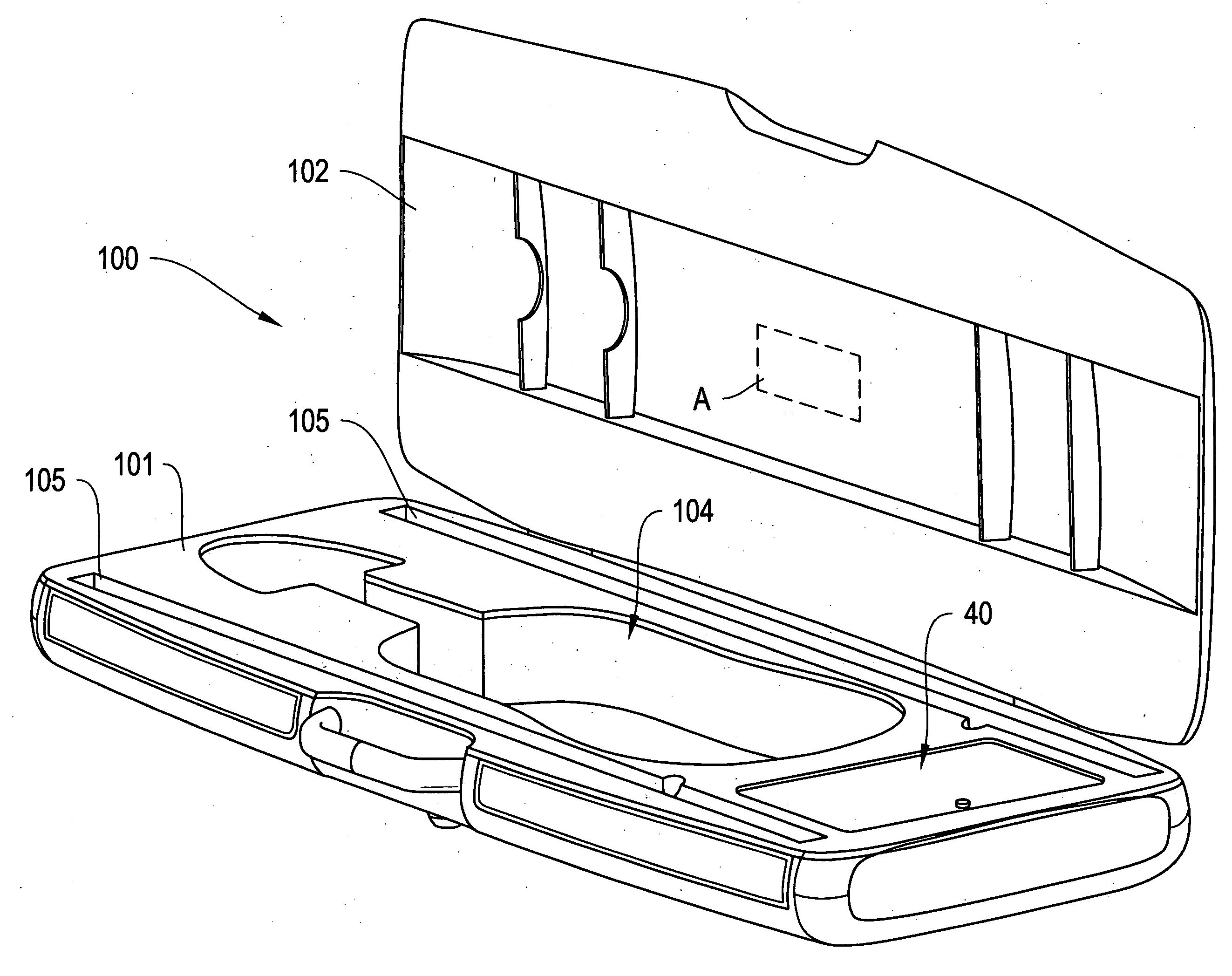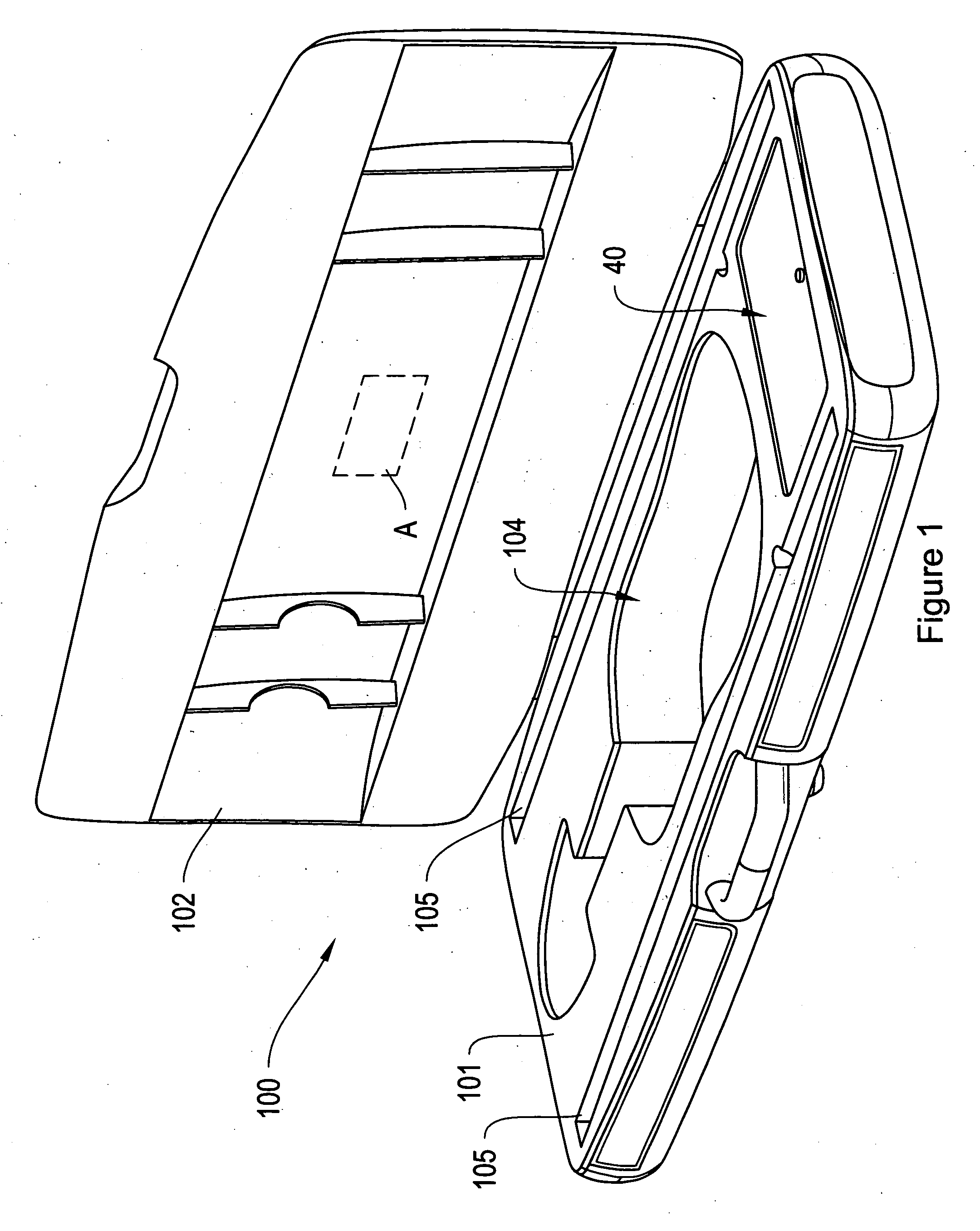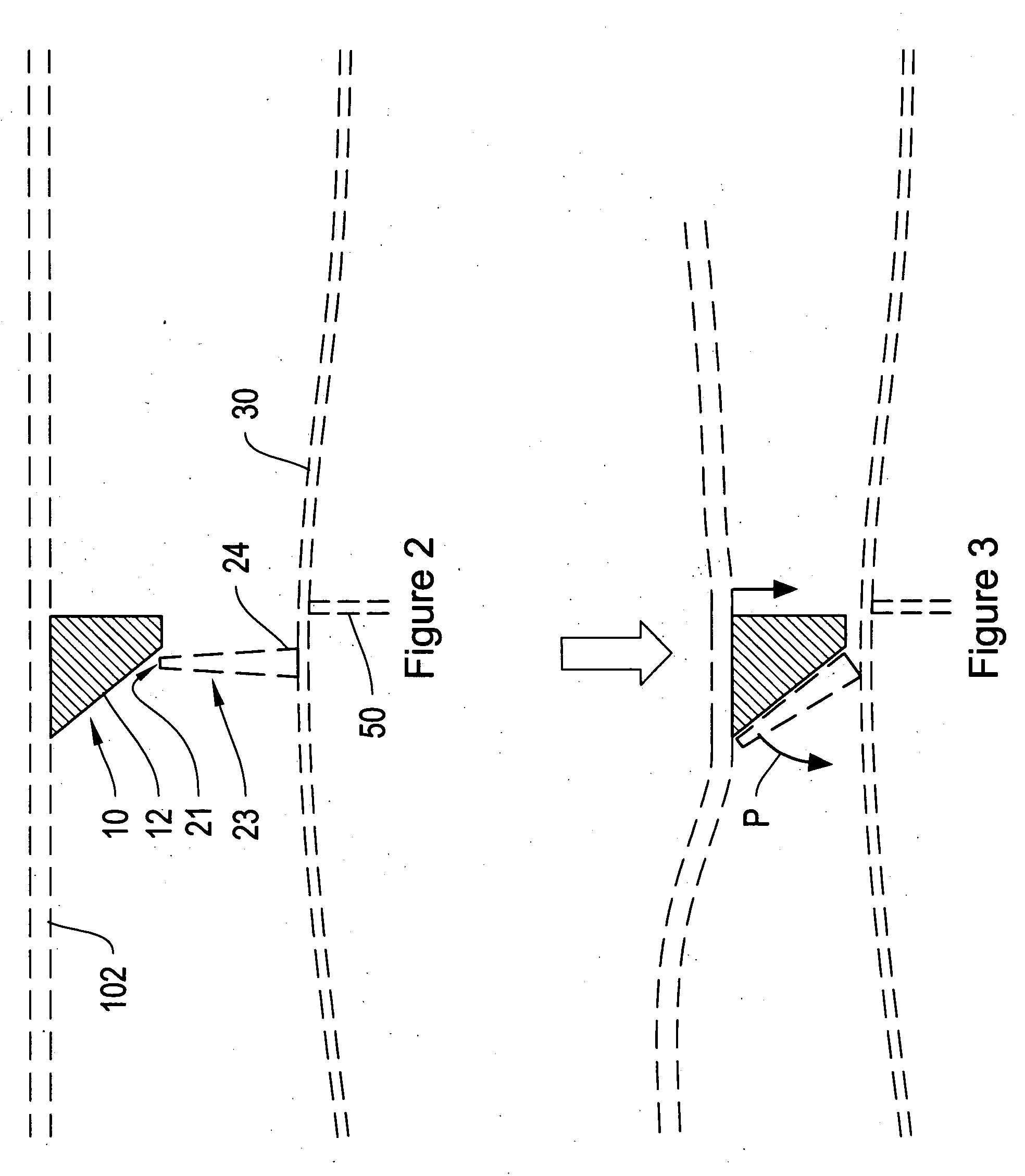Safe instrument case and protection devices
a protective device and instrument technology, applied in the field of musical instruments protection, can solve the problems of affecting the protection effect of instruments, so as to achieve the effect of avoiding potential damage pathways and no damag
- Summary
- Abstract
- Description
- Claims
- Application Information
AI Technical Summary
Benefits of technology
Problems solved by technology
Method used
Image
Examples
Embodiment Construction
[0027]FIG. 1 illustrates an instrument case 100 for a violin or viola, having a lower or major body portion 101 and an upper lid portion 102, with a contoured cavity or recess 104 formed in the body 101 into which the instrument fits. In accordance with one aspect of the present invention the case 100 possesses one or more wells 105 into which the instrument bow or bows are fitted. The wells 105 may be the same size or of different sizes (for example to fit a violin bow and a viola bow, or to fit a standard bow and a fractional size bow). Further, the wells may have some form of closure (not shown) such as a long flip-open cover or a pair of snap-down cross straps. Alternatively, the lid portion 102 may be shaped to rest flat across the top of the wells and prevent the bows from shifting around within the case 100.
[0028]As further indicated in FIG. 1, the present invention contemplates a protective device positioned generally in the region denoted A in the figure, which, as explaine...
PUM
 Login to View More
Login to View More Abstract
Description
Claims
Application Information
 Login to View More
Login to View More - R&D
- Intellectual Property
- Life Sciences
- Materials
- Tech Scout
- Unparalleled Data Quality
- Higher Quality Content
- 60% Fewer Hallucinations
Browse by: Latest US Patents, China's latest patents, Technical Efficacy Thesaurus, Application Domain, Technology Topic, Popular Technical Reports.
© 2025 PatSnap. All rights reserved.Legal|Privacy policy|Modern Slavery Act Transparency Statement|Sitemap|About US| Contact US: help@patsnap.com



